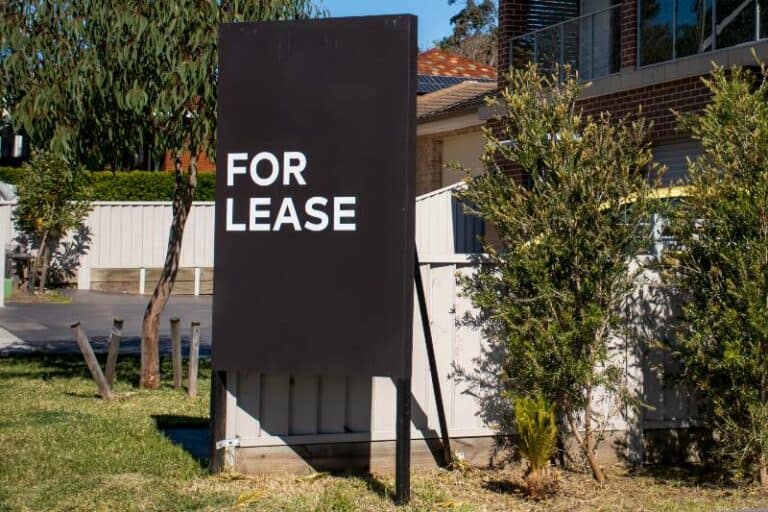As an 18-year commercial real estate veteran, clients often ask me about the prospects for multifamily properties in Los Angeles. This market has long been a staple for investors seeking both cash flow and appreciation. However, some are concerned about risks ranging from rent control policies to the potential for overdevelopment.
In my experience, these concerns are often overblown. The LA multifamily sector retains distinct strengths that will sustain its performance through future cycles. Demand drivers are solid and supply constraints limit downside risk.
Let’s examine the data driving both the recent surge in real estate investment and what supports an ongoing favorable outlook. I’ll also highlight strategies tailored to LA’s unique submarkets.
Key Takeaways
- Los Angeles continues to offer attractive multifamily investment opportunities thanks to strong demand drivers and market resilience.
- Key strengths include favorable demographics, land constraints, high barriers to entry, and a track record of overcoming economic challenges.
- Top LA submarkets like Downtown, Koreatown, and Santa Monica provide options for value-add plays and long-term holds.
Why Los Angeles Multifamily is an Attractive Investment
Los Angeles tops the ranks of major metros for multifamily investment, recording $14.4 billion in sales last year. Rentership stands at 62.2% of households, providing a deep pool of residents. And the average vacancy rate of 3.4% points to healthy landlord leverage.
LA’s sheer size, coastal location, and temperate climate have long set it apart. These factors, along with a diverse economy and high-income demographics, offer properties resiliency across market cycles.
Let’s review current conditions across key metrics including demand, rents, construction, and investment sales. This context clues us into the market’s continued room for growth.
Current State of Los Angeles Multifamily Market
The LA multifamily market shows a mixed profile, with moderate rent gains and increased vacancy even amid limited new supply. Sales activity has softened in recent quarters but points to enduring investor belief in the metro’s long-term performance.
Vacancy Rates and Rent Growth Trends
- The vacancy rate ticked up 0.4% year-over-year to 4% in Q2 2023
- However, this remains well below the 4.4% pre-pandemic rate
- Asking rents rose 4.1% over the past year, led by Class B/C segment gains
- The current asking rent averages $2,449 per month across the metro
Supply/demand dynamics support further rent growth potential, as LA’s vacancy remains below that of comparable major metros. Population and job expansion continue to drive a need for housing across price points.

Construction and Development Activity
- The development pipeline stands at 2.6% of existing inventory
- Downtown LA, Burbank, Inglewood, and the San Fernando Valley lead construction
- New projects focusing on Class A urban-core product fetching premium rents
- High land and construction costs pose challenges in adding middle-market rental stock
Ongoing renter demand allows developers targeting the high-end to pencil out projects. But supply constraints limit new additions region-wide, especially workforce housing.
Investment Sales Trends
- Following a surge in 2021, multifamily investment sales slowed by over 50% from Q1 to Q2 2023
- The median price reached $303,500 per unit, while average cap rates hit 4.8%
- Class A cores saw intense bidding, indicating sustained asset appreciation
Investors are bullish on LA rents catching up with the metro’s higher living costs. And turn-key assets in dynamic neighborhoods still fetch low yields. Value-added plays offer better returns.
Demographic Changes and Migration Patterns
- Gen Z and millennial renters make up over 50% of LA households
- California saw net outmigration during COVID, but higher earners led inbound moves
- LA’s population still grew 0.5% last year to over 10 million residents
Despite statewide losses, LA continues to benefit from domestic migration among top talent. The region’s size and diversity provide unique appeal.

Market Advantages Supporting Investment Appeal
Let’s hone in on the key pillars that set LA multifamily apart in terms of investment prospects. Focus belongs on demographics, land supply, and barriers to adding new competition.
Strong Renter Demand and Favorable Demographics
- 62.2% renter share with over 5 million tenant households
- Average household income tops $100k; worlds’ entertainment hub
- Gen Z and millennials prefer renting and urban proximity
LA rents become more attainable for higher-earning young professionals. And many prioritize location over space.
Limited Land Constraining New Supply
- Geographical barriers drive the nation’s costliest development land
- Existing inventory is 95% built out; few plots left to develop
- New projects pencil out only for Class A with premium rents
Scarce plots suitable for apartments allow pricing power as the population expands. There’s little risk of oversupply dynamics kicking in.
High Barriers to Entry for New Investors
- Intense investor competition with all-cash, non-local bidders
- Class A cap rates below 4% require large equity stakes
- Strict rent control and eviction policies challenge novices
LA’s fame brings global investor interest. Costs and regulations pose a learning curve, slowing a rush of new buyers.
Factors Supporting Continued Strength
While LA presents unique hurdles, tailwinds ranging from lending shifts to economic diversity promise to uphold multifamily performance.
Changes in Lending Standards and Financing
- Rising mortgage rates expand all-cash buyer pool; cap rate compression
- Bullish lenders attracted to LA property values and rent upside
- Insurance and maintenance costs grow but trail the national average
Higher costs limit smaller operators but propel institutional investment. Lending markets still eye LA favorably despite regulations.
Government Policy Changes and Rent Control
- Rent control is concentrated in the city core; most suburbs are exempt
- Phaseout of COVID eviction bans will allow rents to correct upwards
- Reduced tax deductions may motivate some landlords to sell
Shifting policies may yield a turnover of existing assets. But protected tenants and upside rents balance out impacts.
Resilience Through Economic Cycles
- Prices and rents dropped only 15% in the 2008 crisis versus 45% elsewhere
- Tech, trade, tourism, healthcare, and creative sectors insulate the economy
- Population and job base expanding regardless of broader conditions
Economic diversity paired with constant demographic demand makes LA less sensitive to downturns. Real estate here stays attractive as a safe harbor.
Top LA Submarkets and Investment Strategies
While the metro’s overall density and prestige sustain property performance, some neighborhoods cater to specific investment plays. These locales can enhance returns for those with aligned holding periods.
Downtown LA
- Urban core with live/work/play identity attractive to young professionals
- Lack of new high-rises leaves Class A in short supply
- Risk of overpaying unless catching assets before the next wave of development
Downtown appeals to millennial renters. But beware of long-term inflation risks until the skyline fills out.
Koreatown
- Central location drives strong tenant demand from entertainment workers
- High-rise condos are common but open land for new apartments scarce
- Mostly pre-1978 buildings allow for renovations and repositioning
Koreatown offers value-added potential thanks to its aging yet spacious building stock. Proximity to studios and venues bolsters occupancy.
Santa Monica/Westside
- Upscale neighborhoods with upside potential from tech and entertainment tenants
- Strict rent control limits short-term gains but supports long-term holds
- Low vacancy and turnover make acquiring properties challenging
Premium Westside areas reward patient capital willing to ride future economic growth despite policy headwinds.
San Fernando Valley
- Bedroom communities located outside the central city’s barriers to entry
- Household formation and overflow renter demand push occupancy
- Competitive pricing allures middle-class residents priced out of closer-in locales
Valley markets offer relatively affordable housing with quick access to LA’s urban job centers. New projects cater to this demand.
Risks and Headwinds to Consider
- Rising interest rates increase borrowing costs on leveraged deals
- Slow permitting/zoning process delaying development projects
- Tenant protections around evictions and rent control on pre-1999 buildings
- Downward pressure on rents as concessions offered to retain residents
Investors should factor in financing terms, entitlement hurdles, and existing regulations when assessing assets. Assume moderate rent growth in short.
Outlook for 2023 to 2024 and Beyond
Despite some uncertainty, tailwinds outweigh the risks to position LA multifamily as an appealing long-term investment. Steady population increases over the next decade guarantee housing demand and property performance.
Specific factors stoking optimism include:
- Household growth averaging 1.1% yearly as echo boomers enter rental pool
- Rents rise faster for units not covered by rent control
- Land costs and resource constraints keeping new supply muted
- Local government supporting higher-density housing across income levels
In summary, the city of Los Angeles presents a unique real estate ecosystem with barriers that reward experience. For strategic investors, the region’s underlying strengths should support asset appreciation and favorable returns over extended hold periods.
Those new to this real estate market can mitigate risks by pursuing joint ventures and pairing their capital with local operating partners. And sticking to Class B/C value-add deals avoids overpaying amid intense bidding on Class A cores.
Here are headers discussing the potential impact of tightened lending standards on Los Angeles multifamily commercial real estate:
Recent Articles and Multifamily Report See Tighter Lending Threatens Los Angeles Market Momentum
A recent Fitch Ratings report warns that tightened lending standards across commercial real estate could lead to increased maturity defaults and property delinquencies through 2025. Multifamily is expected to see loan delinquencies rise from 0.62% to 1.5% over that period.
Lending Shift Adds Another Headwind for LA Apartment Owners
Los Angeles multifamily already faces near-term challenges like slowing rent growth and inflated construction pipelines. Tighter loan qualifications will further dampen investment activity, with Fitch forecasting a doubling of CMBS delinquencies overall.
Specific implications for Los Angeles apartment investors include:
– Increased equity requirements reducing the pool of potential buyers
– Higher debt costs exacerbating existing affordability issues
– Struggling landlords forced to offer rental concessions to retain occupancy
The ratings agency sees suburban markets better positioned to weather financing shifts than urban cores – though LA’s diversity lends some resilience.
Navigating the Financing Environment
In light of jittery capital markets, multifamily investors can buffer risk by:
– Targeting discounted Class B/C value-add deals to drive NOI
– Securing fixed rates of 5+ years to ride out higher short-term costs
– Prioritizing markets like San Fernando Valley with positive demand drivers
Prudent underwriting metrics will enable apartment owners to unlock Los Angeles’ long-term rent growth potential as markets stabilize.
FAQs
Why do investors target multifamily properties in Los Angeles County?
LA’s size and strong economy help multifamily assets endure through market cycles. Limited land for development gives landlords consistent pricing power as the region adds new residents. Investors bank on the metro’s resiliency and future growth.
What are current vacancy rates and rent growth in CA multifamily?
The overall metro vacancy rate averaged 4% in Q2 2023, up slightly in the past year but still tight compared to other major cities. Asking rents rose 4.1%, led by Class B/C gains. Continued population increases support more rent growth ahead.
Which LA neighborhoods have seen the most new multifamily construction?
Areas adding the most new apartment units recently include Downtown Los Angeles, Burbank, Inglewood, and the broader San Fernando Valley. However, construction remains limited region-wide owing to high development costs and scarce land.
How have changes in lending standards impacted LA multifamily investors?
Rising mortgage rates have increased borrowing costs, leading to more all-cash buyers. However, lenders maintain favorable valuations of LA properties based on higher rents and resilient asset values over time. Costs are pricing out smaller operators.
What does the future hold for rent control policies in Los Angeles?
Rent control will likely expand across LA County in the coming decade. However, most of the suburban cities still allow annual increases at roughly inflation. Investors can factor protected tenant rates into their underwriting.
Conclusion
For investors new to the Los Angeles market, I advise teaming up with an experienced real estate professional. We offer long-standing relationships with brokers and vendors to smooth transactions. Schedule a consultation today to discuss your needs in confidentiality. I’m confident we can map a strategic plan to profit from LA’s continued multifamily housing demand.
Blog Articles Disclaimer
The information presented in articles on our website or affiliated platforms is exclusively intended for informational purposes. It’s crucial to grasp that this content does not constitute professional advice or services. We strongly recommend our readers to seek guidance from appropriately qualified experts, including, but not limited to, real estate and other attorneys, accountants, financial planners, bankers, mortgage professionals, architects, government officials, engineers, and related professionals. These experts can offer personalized counsel tailored to the specific nuances of your individual circumstances. Relying on the content without consulting the relevant experts may hinder informed decision-making. Consequently, neither Tolj Commercial Real Estate nor its agents assume any responsibility for potential consequences that may arise from such action.






